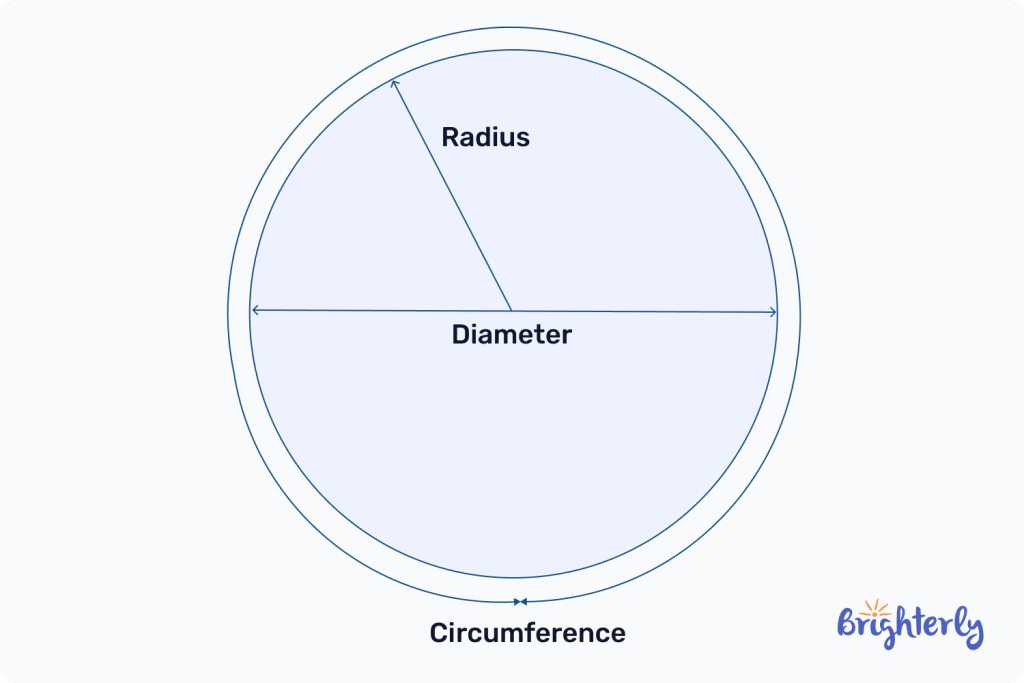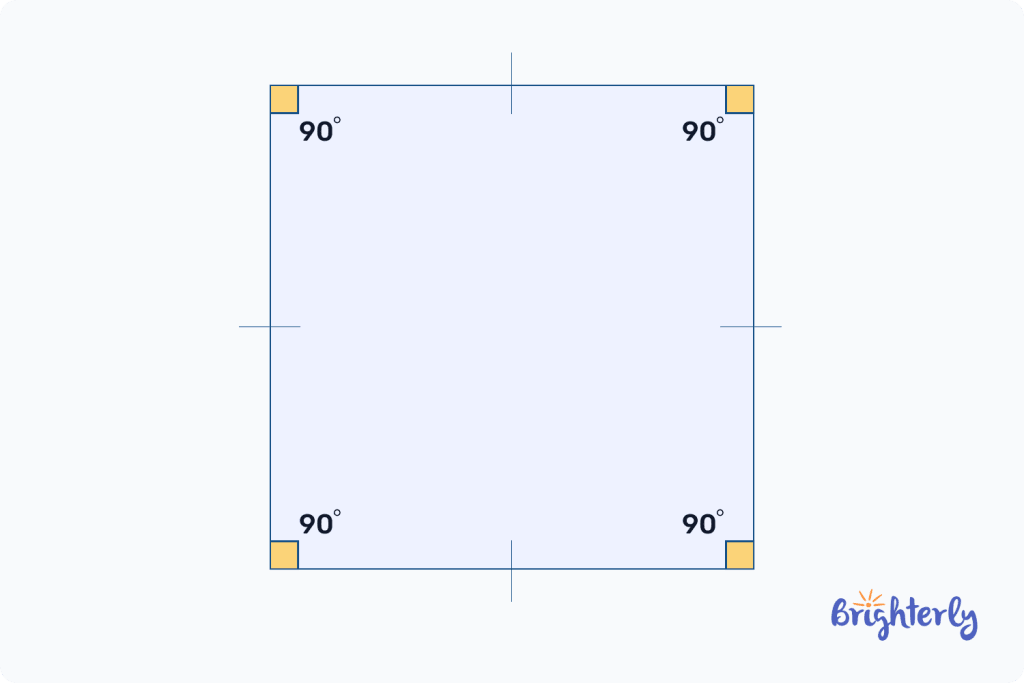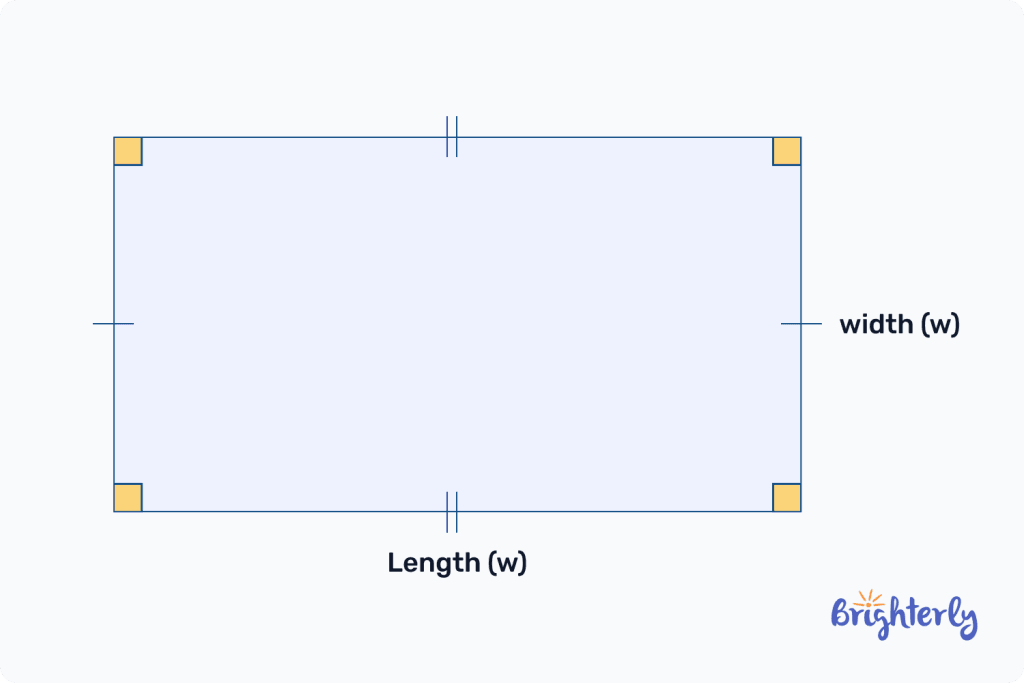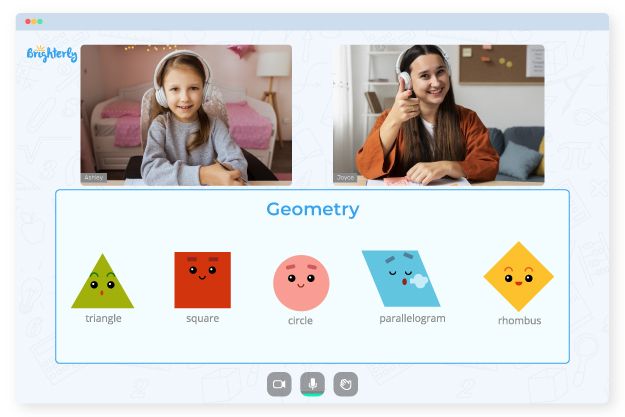Shapes – Definition, Types, FAQs, Practice Problems, Examples
reviewed by Jo-ann Caballes
Updated on July 15, 2025
Kids are introduced to geometric shapes from preschool onwards, forming the basis of math concepts. Their learning includes volume, length, and perimeter.
Here, we’ll cover what geometric shapes are, the main types of shapes, provide examples and share practice test problems.
What are shapes?
Shapes are the form or outline of an object. Every physical object in the world is formed of a shape. 2D geometry shapes are the most basic shapes and are flat. 3D shapes are introduced later.
Shapes: definition
There are two major types of shapes: geometric and organic. We’ll cover geometric shapes, which fit into the rules of mathematics and geometry. Organic shapes are freeform and don’t follow mathematical principles.
Shapes are made up of lines or curves. Everything is a shape, and many can be broken down into other geometrical shapes. A pizza, for example, is usually a circle cut into triangles.
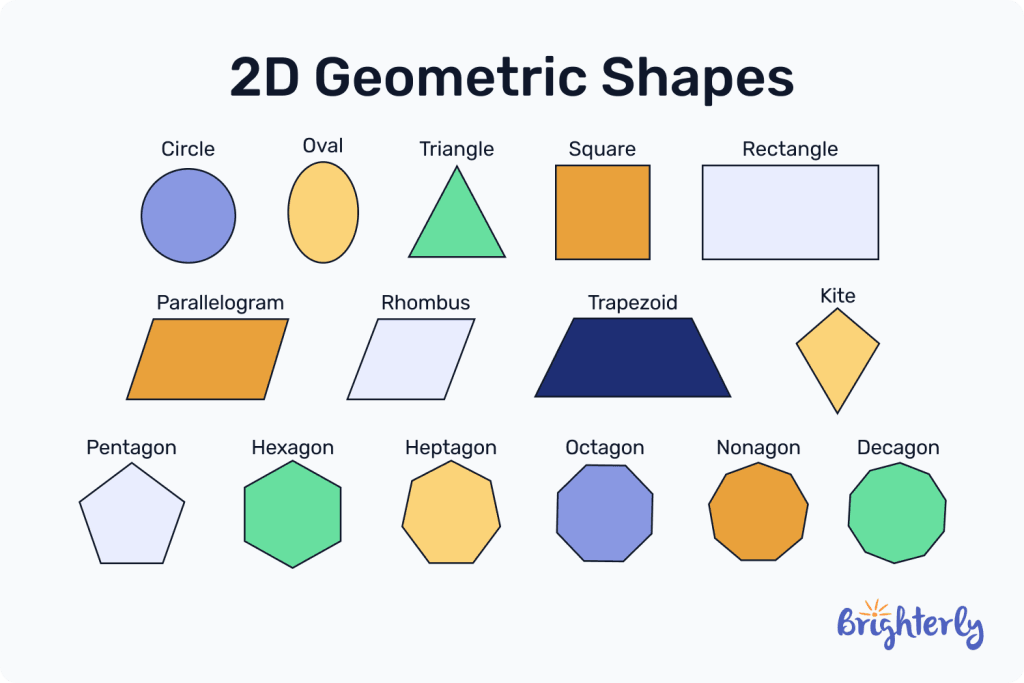
Different types of shapes
There are many different types of shapes, including:
- Circles
- Ovals
- Triangles
- Squares
- Rectangles
- Parallelograms
- Rhombus
- Trapezoid
- Kite
- Pentagon
- Hexagon
- Septagon
- Octagon
- Nonagon
- Decagon
Types of shapes with examples
There are four key types of 2D math shapes we study below with example images.
Circles
A circle is a round shape where every point of the shape is the same distance away from the center. A circle is a symmetrical shape – meaning if a line is drawn through the middle, each side will be an exact reflection of one another. Circular objects include:
- Balls
- Coins
- Hula hoops
- Plates
- Discs
- Bangles
- Buttons
- Rings
Squares
Squares are another symmetrical 2D shape consisting of four sides of equal length, meaning all four angles are right angles measuring 90° and adding up to 360°. Square objects include:
- Rubix cubes
- Pizza boxes
- Floor tiles
- Cushions
- Waffles
- Brownies
Rectangles
Rectangles are a shape similar to squares, but not all sides are equal – instead, the two parallel sides are equal to one another. All angles are also right angles of 90° and add up to 360°. Rectangles are also symmetrical. Examples of rectangular objects include:
- Football fields
- Photo frames
- Laptops
- Tablets
- Mobile phones
- TVs
- Books
- Doors
- Magazines
Triangle
Triangles are polygon shapes in geometry with three sides and three internal angles. Triangles come in many forms, depending on the length of their sides and internal angles, including:
The internal angles of triangle types and sizes always add up to 180°.
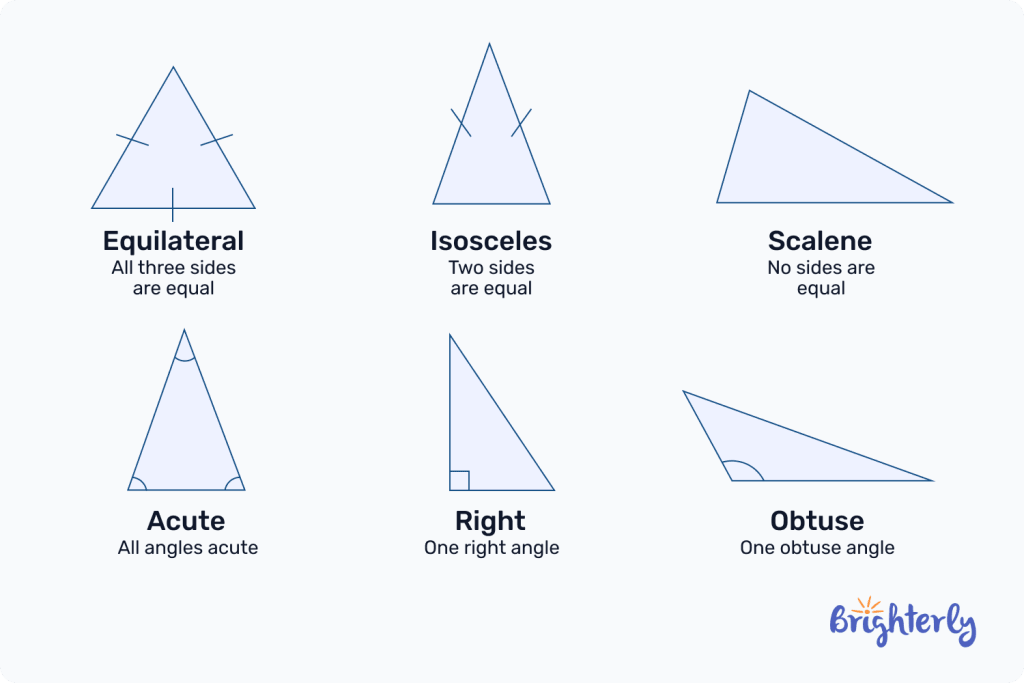
List of shapes
Here’s a list of some common math shapes kids will be introduced to in kindergarten in addition to the four basic geometrical shapes.
| Oval | 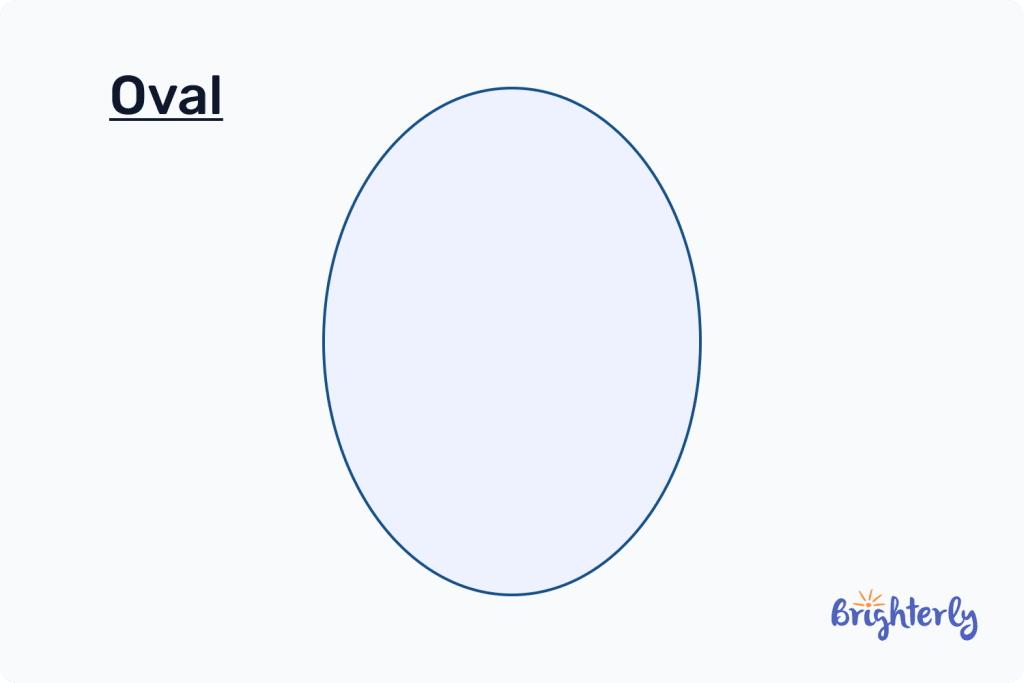 |
| Rhombus | 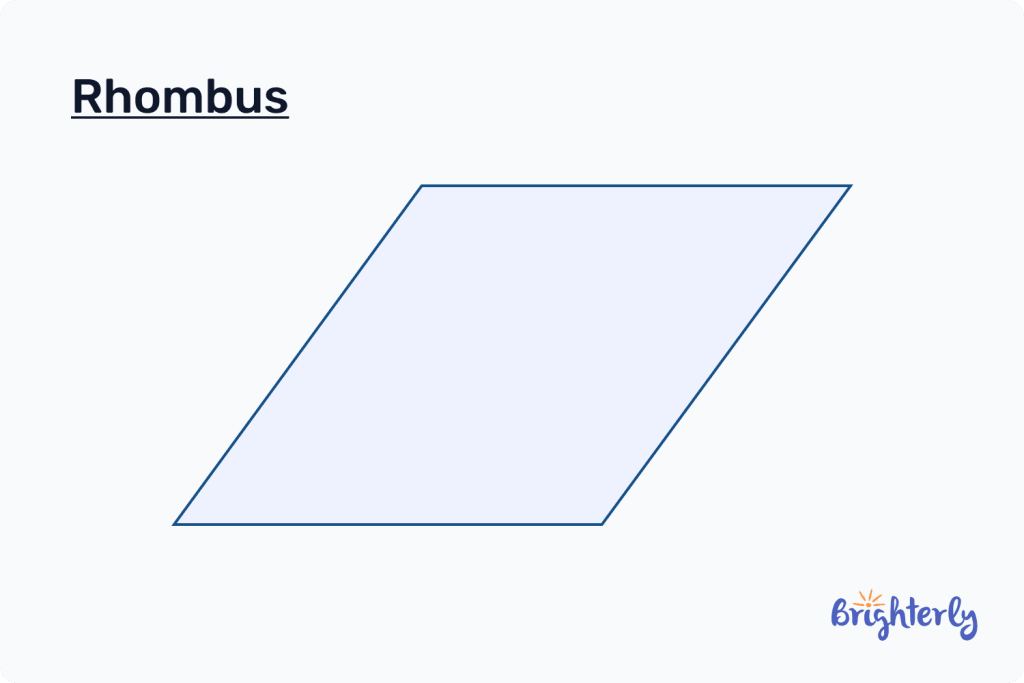 |
| Trapezium | 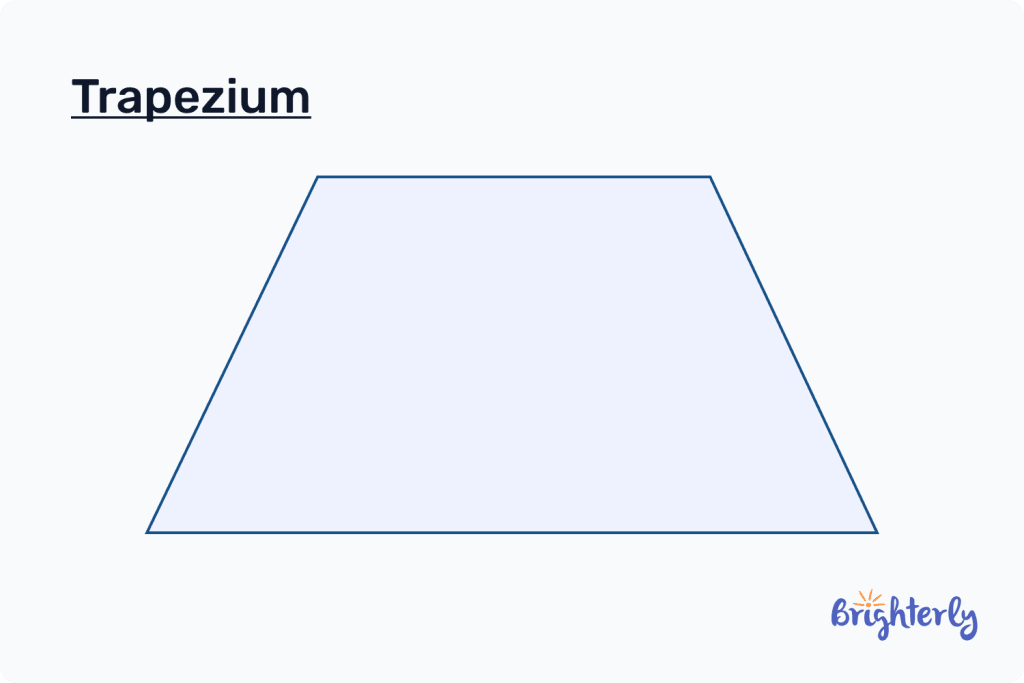 |
| Pentagon | 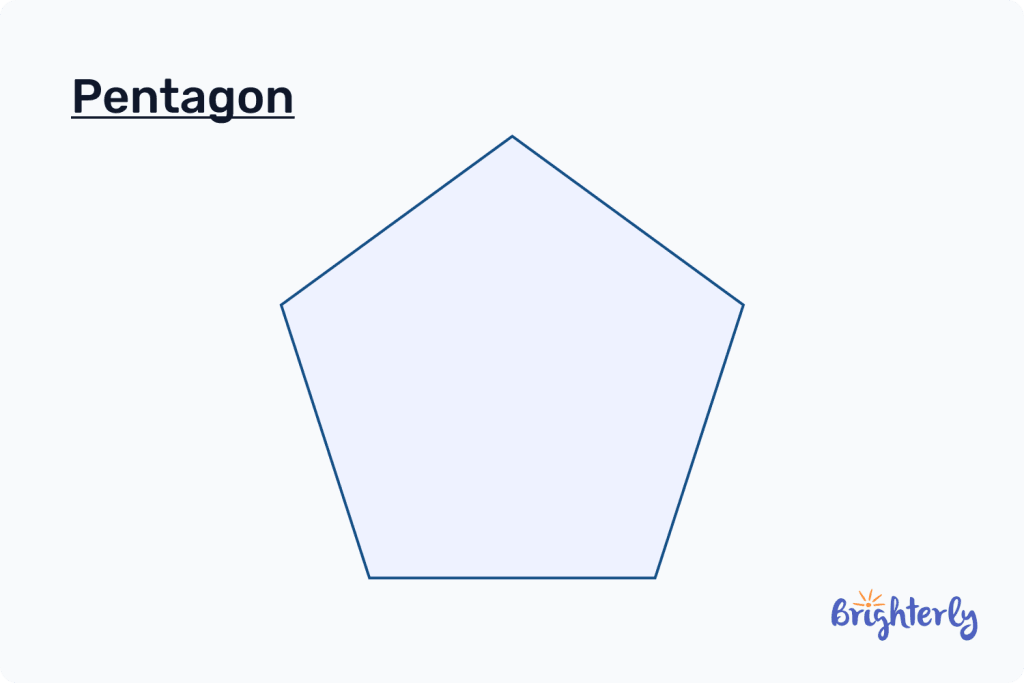 |
Solved examples of shapes
We’ve included some solved geometry shapes examples so your kid can use them to practice their math shapes knowledge.
Solved math problem 1
Which shape is not a closed shape?
- Circle
- Rectangle
- Triangle
- Zigzag
Answer
| Zigzag. |
The sides of a zigzag don’t meet one another, meaning the shape is not closed.
Solved math problem 2
Which math shapes are 3D geometric shapes?
- Cuboid
- Rectangle
- Cylinder
- Triangle
Answer
| Cuboid and cylinder. |
3D shapes have three-dimensional properties, and both triangles and rectangles don’t.
Shapes: practice math problems
Shapes worksheets
Brighterly offers math worksheets covering different types of shapes:
- Triangle worksheets
- Square worksheets for preschool
- Shapes worksheets for preschool
- Shape tracing worksheets
